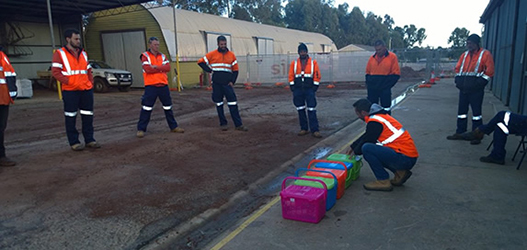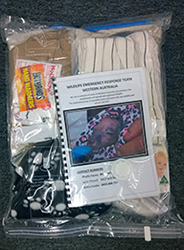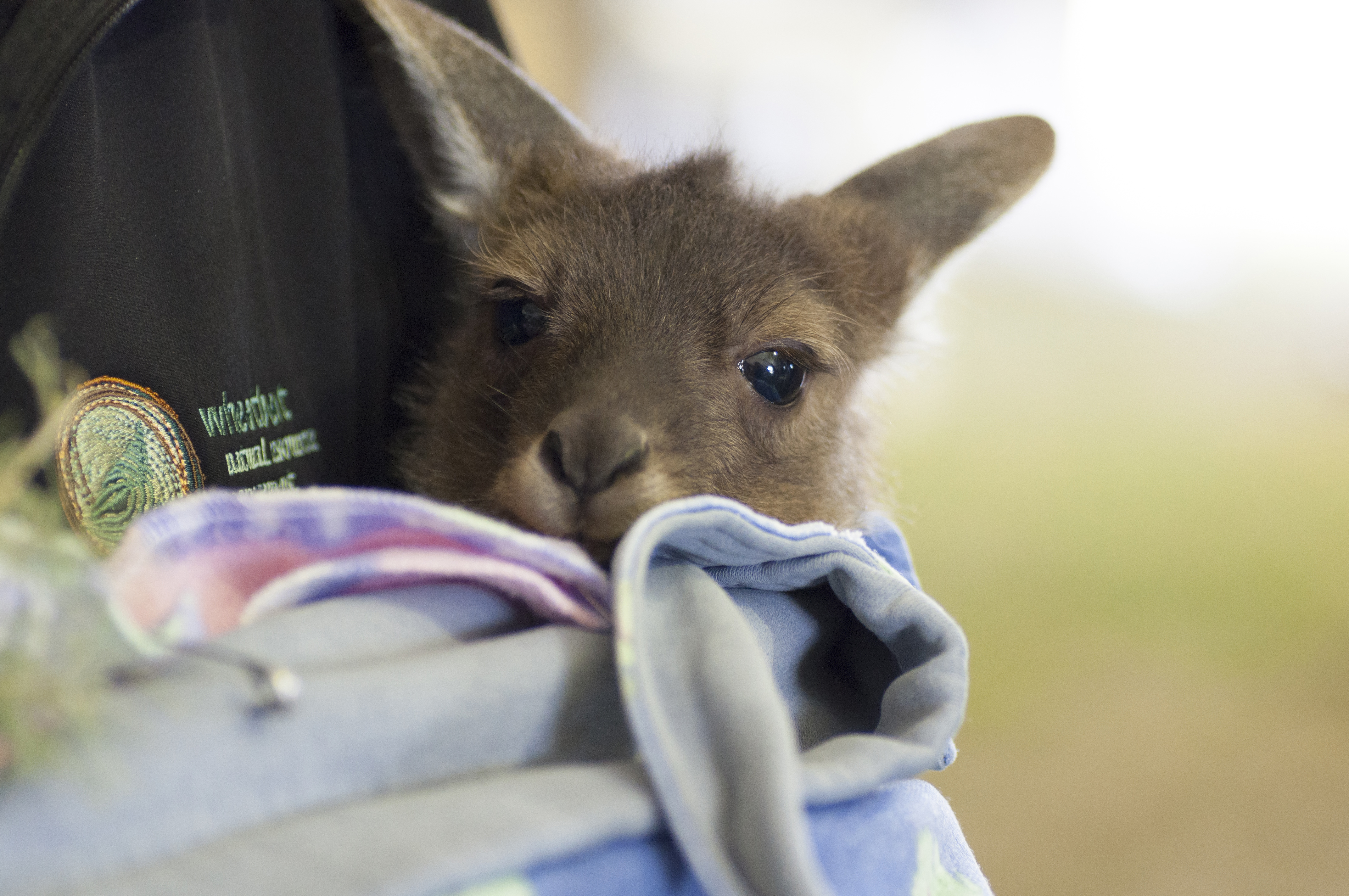Wildlife Emergency Rescue Packs | By Colleen Fulford - Wheatbelt Region
This initiative comes out of an interesting meeting to identify a rare species of Eremophila in the Road Reserve on the Northam Cranbrook Road, just south of Beverley, which I attended in July 2016 to meet with Phyllis Facey, President of the Beverley Naturalist Club.
After the usual conversations one has with a stranger whilst walking together for the first time, Phyllis asked me what happens to joey’s in the pouch of a mother that had been hit by a vehicle and required dragging off the road by a maintenance truck in the morning, or other injured wildlife and orphaned animals that are found on the Main Roads network and road reserves.
I explained the harsh reality of what usually happens when help is not immediately at hand, Phyllis responded by asking me if anyone had ever offered Main Roads the tools to easily rescue the orphaned/injured wildlife.
Phyllis offered to put together a few pouches of different sizes and get back to me, I offered to progress the idea within Main Roads and see if there was support for the idea of putting a few pouches into the maintenance trucks and other Main Roads vehicles which were frequently travelling the network.
From the initial maintenance meeting to float the idea of a pilot program, to the drivers of vehicles on the network, a very positive response was received to support trialling Wildlife Emergency Rescue Packs on the network.
A week later I met with Phyllis to receive the pack of a few pouches and was completely surprised to be given a very comprehensive rescue pack within a basket, containing everything required to assist almost any species of injured wildlife.
The pack contained various sized pouches for both furred and unfurred joeys, and other marsupials etc, small blankets, instant heat packs, hand cleaners, and other items which may be required in a wildlife rescue, including instructions on what to do, pictures of animals to identify the specimen, and a list of phone numbers that the user of the rescue pack could phone to have a representative of the Wildlife Emergency Response Team come to wherever on the network the caller was, or heading towards, to retrieve the injured/orphaned animal. The kit was simple and easy to understand, any injured animal could be made safe within a few minutes, and a rescuer on the way promptly to a destination on the path of travel to retrieve the animal.
If the injured/orphaned wildlife is an endangered species, the Wildlife Rescue team member takes it to the Perth Zoo for specialist care, alternatively the subject is taken to a regional carer for further treatment and future care. The kit contains a few forms that enable notes to be taken of where on the network the animal was found, particularly useful if the animal is an endangered species, there is also a section on the form for the name of the person who has initially dealt with the subject so that they can be contacted and provided with information if they are interested in the outcome of the rescue, and the progress and healing of the injured/orphaned wildlife.
Within Wheatbelt Region there is now 12 basket style Wildlife Emergency Rescue packs for the trucks and vehicles with work boxes on the back, and 3 Wildlife Emergency Rescue flat packs which are designed to go under the seat of a vehicle with restricted space. Further flat packs are currently being made up for the unfulfilled requests for Rescue flat packs.
 |
|
Packs being issued to road maintenance crews
|
 |
| Wildlife Emergency Rescue Packs |
Read more - Wildlife Emergency Rescue Packs are issued to Main Roads WA trucks (ABC News)


